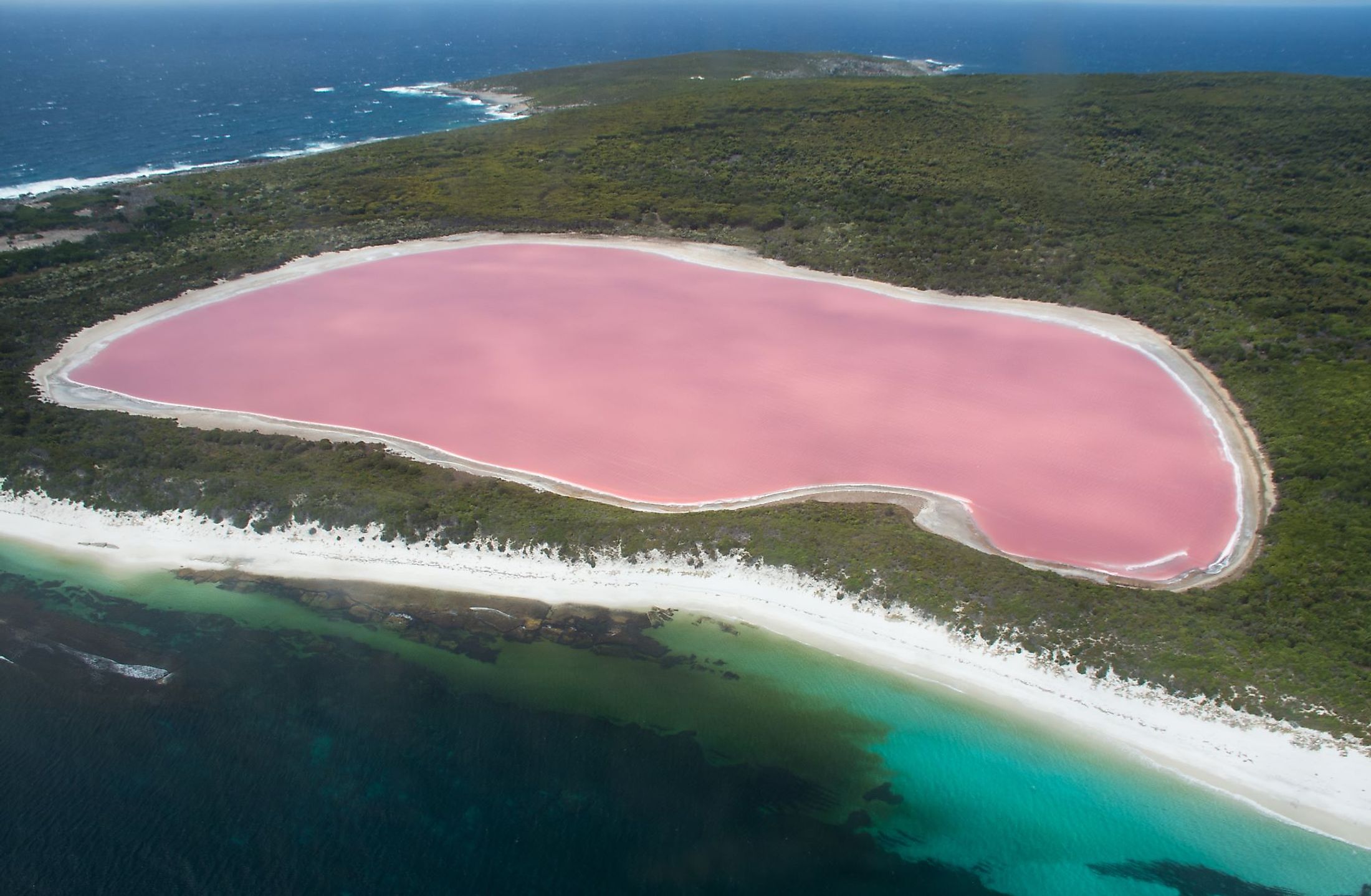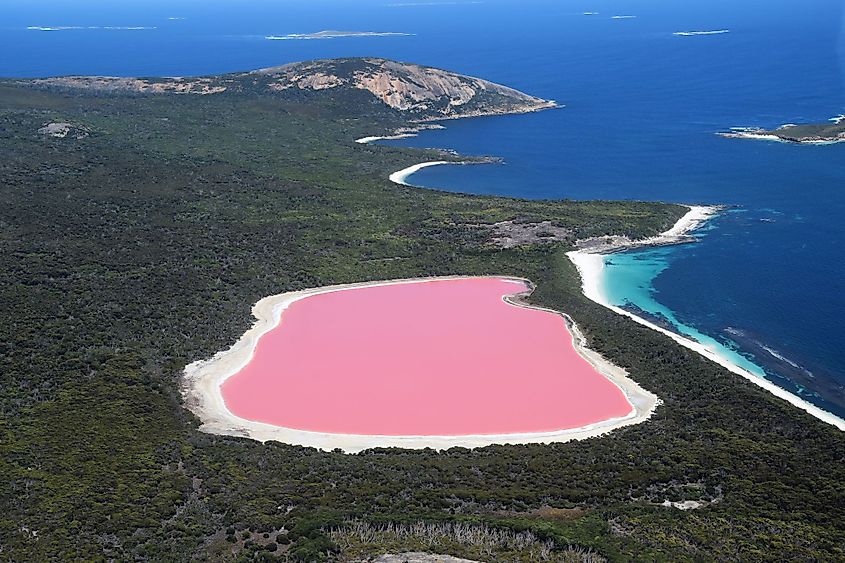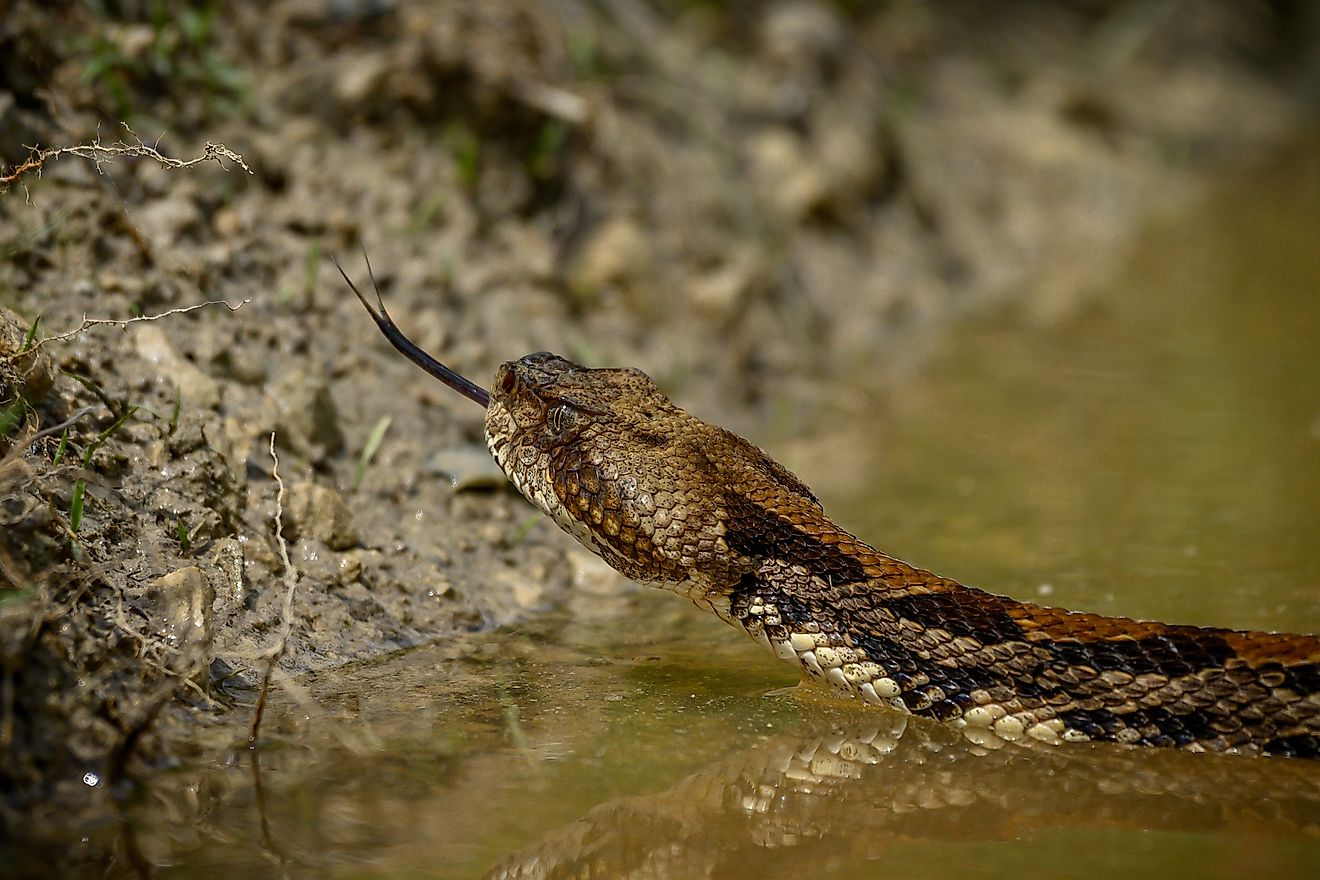
Lake Hillier
Lake Hillier is a saline lake in Western Australia notable for its pink appearance throughout the year. It is different from other pink lakes, which lose their unique pink color during some seasons. Discovered by a Royal Navy in 1802, the lake is located on the coast of Middle Island, Recherche Archipelago’s largest island, and separated from the Southern Ocean by a thin shore. The archipelago is one of Australia’s wilderness areas, with Lake Hillier as the main attraction. The cause of the lake’s appearance is a subject of debate as there is no proven scientific explanation for the phenomenon. The Archipelago, including Lake Hillier, is a protected area known as Recherche Archipelago Nature Reserve.
Size And Appearance
Lake Hillier is a small lake covering about 0.15 square kilometers. From the air, the lake looks like a pink bubble-gum surrounded by thick dark-green vegetation and separated from the Southern Ocean’s dark blue waters. The lake is 600 meters long and 250 meters wide and sits at the edge of the Middle Island, with a rim of sand around it. Lake Hillier is also shallow and has salt crust deposits along its shoreline, creating a saltier environment than the neighboring ocean. However, the lake is safe for swimming despite its saltiness. Hillier maintains its pink color all year round, and the color does not change when you put the water in a container or glass. Lake Hillier and the surrounding area is a restricted area and open to visitors only under special circumstances. The only possible way to view the lake is through a helicopter ride.
Why Is The Lake Pink?

There is no universally accepted explanation for Lake Hillier’s pink appearance or how it maintains the pink pigmentation throughout the year. The cause of the pink color in other pink lakes like Dusty Rose Lake, Laguna Colorada, and Lake Retba has been explained as a combination of salt-loving microorganisms, known as halobacteria and Dunaliella salina, and high salinity. However, the cause of Lake Hillier’s pigmentation remains a mystery. Lake Hillier is one of the least studied lakes, mainly due to its isolated and remote location.
Some scientists attribute the lake’s pigmentation to the presence of Dunaliella salina, which can tolerate a salinity level of up to 35%. These salt-loving microorganisms produce beta-carotene (also present in carrots), thought to be responsible for the pink coloration. The salt crust around the lake contains archaea and halobacteria, which also produce carotenoid pigments considered responsible for the lake’s coloration.
Brief History
Lake Hillier was unknown to the world until the early 19th century. Mathew Flinders, a British Cartographer and Navigator, discovered the lake in January 1802. That same month, Flinders ascended the island’s highest peak (now known as Flinders Peak) and observed the lake. He recorded that the lake was small and of rose color with saturated salty water. He named the lake in 1803 in honor of William Hiller, one of HMS Investigator’s crew members, who died of dysentery on the Middle Island during Flinders’ visit to the island. In the late 19th century, Edward Andrews and his two sons settled on the island and worked the salt deposit on the lake for about one year. However, the salt was too toxic to support commercial production.











